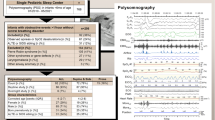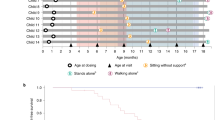Abstract
Summary: Not principally different from the results obtained in more mature subjects, monosynaptic reflex excitability of spinal motoneurones in preterm infants decreases during active sleep. However, in preterm infants the electric reflex response is not abolished, and is not even continuously depressed during the entire active sleep period. Spinal motoneurone inhibition is demonstrable only during certain periods of active sleep, and it is during this state of decreased spinal motoneurone excitability when apneic spells predominantly occur.
Speculation: The concept of apneic spells being promoted by rapid eye movement (REM) sleep brain mechanisms, as outlined by Gabriel el al. (10) and supported by data of this study, can so far mainly explain respiratory pauses in otherwise healthy preterm infants. However, in neonatal sepsis, meningitis, hypoxia, hypoglycemia, etc., the same central nervous system inhibitory processes should increase the risk of apneic spells, provided that active sleep states still exist. Furthermore, Bryan and Bryan (2) have demonstrated a considerable thoracic wall instability during active sleep, which is probably also due to inhibition of spinal motoneurones innervating intercostal muscles. Thus, when respiratory brain stem centers are partly damaged, tonic spinal motoneurone inhibition during active sleep can additionally increase the infant's difficulty in maintaining sufficient respiration.
Similar content being viewed by others
Log in or create a free account to read this content
Gain free access to this article, as well as selected content from this journal and more on nature.com
or
Author information
Authors and Affiliations
Rights and permissions
About this article
Cite this article
Schulte, F., Busse, C. & Eichhorn, W. Rapid Eye Movement Sleep, Motoneurone Inhibition, and Apneic Spells in Preterm Infants. Pediatr Res 11, 709–713 (1977). https://doi.org/10.1203/00006450-197706000-00002
Issue date:
DOI: https://doi.org/10.1203/00006450-197706000-00002
Keywords
This article is cited by
-
Sleep, wakefulness and the monosynaptic reflex in fetal and newborn lambs
Pfl�gers Archiv European Journal of Physiology (1980)



